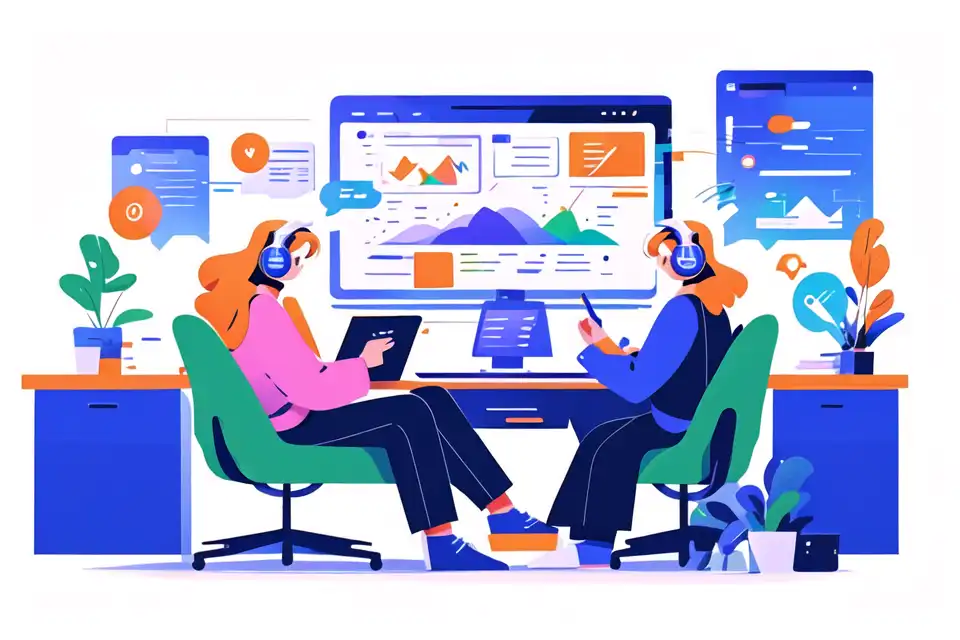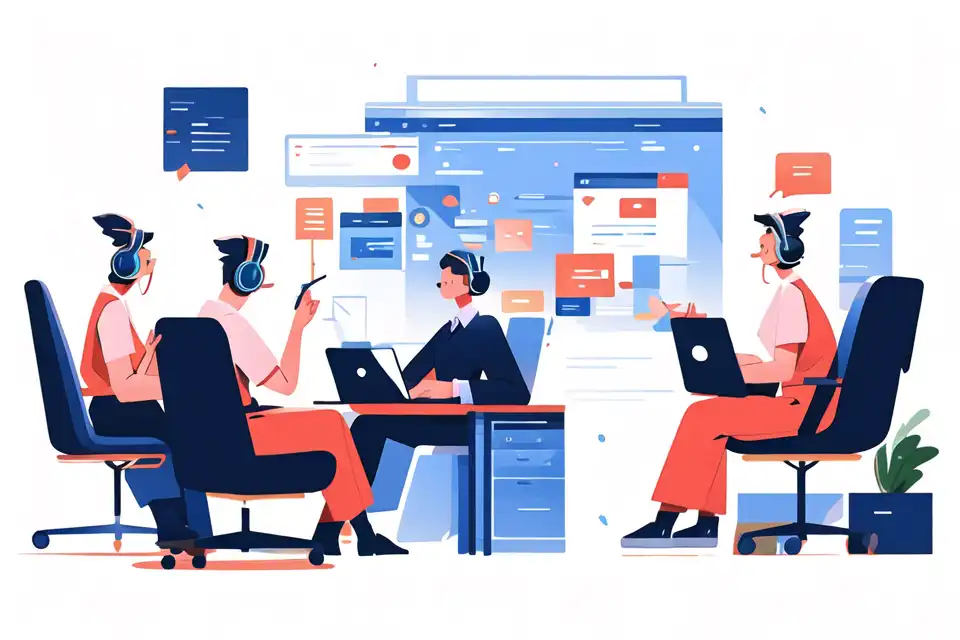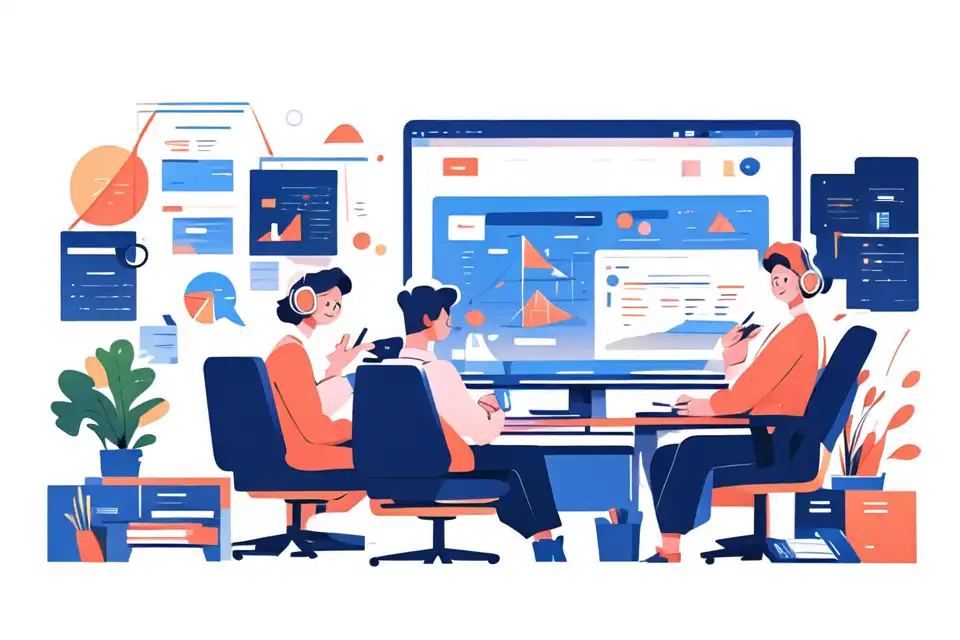Education Technology Solutions
Learn about the top tips and strategies in education technology solutions
Try Lark for Free
Education technology solutions, often referred to as EdTech, are revolutionizing the learning environment. This guide aims to shed light on this transformative education trend, elucidating its importance, practical implementations, and the role of industry pioneers like Lark. By the end of this guide, you should have a comprehensive understanding of EdTech solutions and how they're shaping the future of education.
Unlock the power of Lark to elevate your business operations. Discover actionable strategies and best practices in our comprehensive guide.
The dawn of education technology solutions
Understanding Education Technology Solutions
EdTech solutions refer to the use of digital tools and technologies to enhance teaching and learning experiences. These range from learning management systems (LMS) and student information systems (SIS) to interactive whiteboards and artificial intelligence-based learning aids.
The Importance of Education Technology Solutions in Modern Learning Environments
EdTech solutions have become imperative in modern learning environments. They foster interactive learning, facilitate personalized education, and enable remote learning, contributing to an engaging and flexible learning ecosystem.
Unpacking the Global Landscape: Interesting Trends and Statistics
The global EdTech market is expected to reach $404 billion by 2025, reflecting the rising adoption of digital learning tools. Interestingly, a study shows that 92% of teachers believe that technology has a significant impact on their ability to enhance and accelerate learning.
The empowering impact of education technology solutions
Enhancing Teaching and Learning through Tech Solutions
EdTech solutions empower both teachers and students. They provide teachers with rich resources for course planning and student assessment, while students get access to interactive and personalized learning content.
Evaluating Impact: Student Engagement and Learning Outcomes
Numerous studies indicate that EdTech solutions increase student engagement and improve learning outcomes. For instance, a study revealed that students using digital learning tools showed a 30% improvement in their grades.
Related:
Education Solution | LarkLearn more about Lark can help you with everything mentioned so far in the article.
The practical application: implementing education technology solutions
Steps to Integrate Tech Solutions into Classroom Curriculum
- Identify Your Needs and Goals
- Select the Right EdTech Solution
- Train the Educators
- Gradually Integrate the Solution
- Monitor and Evaluate the Implementation
Essential Tools and Resources for Successful Implementation
Implementing EdTech solutions requires a set of tools and resources. These include robust hardware, reliable internet connectivity, digital content and software, and continuous technical support.
Lark’s role in facilitating education tech solutions
Lark’s Innovative Solutions for Digital Learning
Lark offers a suite of digital solutions that facilitate remote learning and collaboration. These include a smart calendar, cloud storage, video conferencing, and real-time document collaboration, making learning seamless and engaging.
Real Life Application of Lark in Educational Institutions
Many educational institutions have successfully integrated Lark into their learning ecosystem. For instance, an international school in Singapore leveraged Lark's features to facilitate remote learning during the COVID-19 pandemic, ensuring uninterrupted education for its students.
Learn more about Lark can help you with everything mentioned so far in the article.
Case studies: successful adoption of education technology solutions
Example 1: An Innovative School
A primary school in Australia successfully implemented an AI-based learning platform. This led to an increase in student engagement, with students showing improved problem-solving and critical thinking skills.
Example 2: A Tech-Savvy University
A leading university in the US integrated a comprehensive LMS into their curriculum, thus streamlining course planning, content delivery, and student assessment. The implementation led to improved student performance and higher course completion rates.
Example 3: A Forward-Thinking Educational Institution
An educational institution in the UK introduced virtual reality (VR) in their science classes. This immersive technology made learning more engaging and helped students better understand complex scientific concepts.
The hurdles: challenges in adopting education technology solutions and how to overcome them
Identifying Potential Obstacles
Challenges in adopting EdTech solutions include lack of technical skills among educators, resistance to change, and inadequate infrastructure.
Proactive Strategies for Overcoming Challenges
Overcoming these challenges involves providing technical training to teachers, promoting a culture of digital learning, and investing in necessary infrastructure.
Learn more about Lark can help you with everything mentioned so far in the article.
The future of education with technology solutions
Emerging Trends in Education Tech Solutions
Emerging trends in EdTech include AI-based learning, VR and augmented reality (AR) in education, blockchain for credential verification, and the use of big data for personalized learning.
Predictions: How Tech Solutions Will Shape Tomorrow’s Education
EdTech solutions are expected to make learning more personalized, interactive, and competency-based. They are also predicted to reduce the education gap by enabling quality education for all, irrespective of geographical boundaries.
Do's and dont's for implementing education technology solutions
| Do's | Dont's |
|---|---|
| Do involve all stakeholders in the decision-making process | Don't rush the implementation process |
| Do provide adequate training to educators | Don't neglect the infrastructure requirements |
| Do monitor and evaluate the implementation | Don't overlook the importance of data privacy and security |
Learn more about Lark can help you with everything mentioned so far in the article.
Conclusion: embracing the future of education with tech solutions
As we have explored, education technology solutions are not just about fancy gadgets; they are about transforming the learning landscape. They are shaping the future of education, shifting the focus from rote learning to interactive, personalized, and outcome-based education. As we step into the future, embracing these tech solutions becomes not just a choice but a necessity. We hope this guide encourages you to explore and integrate these solutions into your educational ecosystem, ushering in a new era of enriched and empowered education.
Unlock the power of Lark to elevate your business operations. Discover actionable strategies and best practices in our comprehensive guide.








